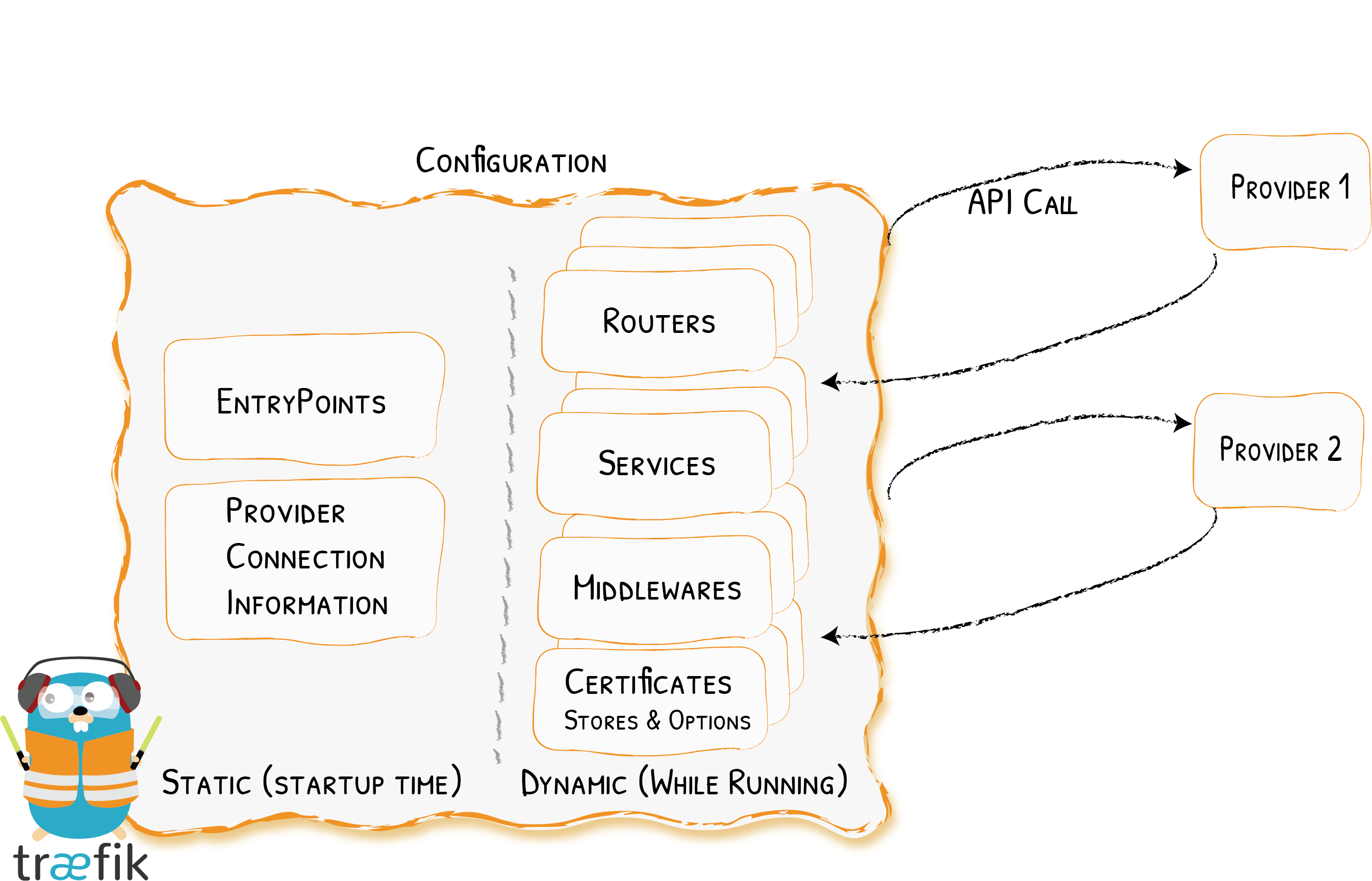Configuration Introduction¶
How the Magic Happens

Configuration in Traefik can refer to two different things:
- The fully dynamic routing configuration (referred to as the dynamic configuration)
- The startup configuration (referred to as the static configuration)
Elements in the static configuration set up connections to providers and define the entrypoints Traefik will listen to (these elements don't change often).
The dynamic configuration contains everything that defines how the requests are handled by your system. This configuration can change and is seamlessly hot-reloaded, without any request interruption or connection loss.
Incompatible Configuration
Please be aware that the old configurations for Traefik v1.x are NOT compatible with the v2.x config as of now. If you are running v2, please ensure you are using a v2 configuration.
The Dynamic Configuration¶
Traefik gets its dynamic configuration from providers: whether an orchestrator, a service registry, or a plain old configuration file.
Since this configuration is specific to your infrastructure choices, we invite you to refer to the dedicated section of this documentation.
In the Quick Start example, the dynamic configuration comes from docker in the form of labels attached to your containers.
HTTPS Certificates also belong to the dynamic configuration.
You can add / update / remove them without restarting your Traefik instance.
The Static Configuration¶
There are three different, mutually exclusive (i.e. you can use only one at the same time), ways to define static configuration options in Traefik:
- In a configuration file
- In the command-line arguments
- As environment variables
These ways are evaluated in the order listed above.
If no value was provided for a given option, a default value applies. Moreover, if an option has sub-options, and any of these sub-options is not specified, a default value will apply as well.
For example, the --providers.docker option is enough by itself to enable the docker provider, even though sub-options like --providers.docker.endpoint exist.
Once positioned, this option sets (and resets) all the default values of the sub-options of --providers.docker.
Configuration File¶
At startup, Traefik searches for a file named traefik.yml (or traefik.yaml or traefik.toml) in:
/etc/traefik/$XDG_CONFIG_HOME/$HOME/.config/.(the working directory).
You can override this using the configFile argument.
traefik --configFile=foo/bar/myconfigfile.ymlArguments¶
To get the list of all available arguments:
traefik --help
# or
docker run traefik[:version] --help
# ex: docker run traefik:2.1 --helpAll available arguments can also be found here.
Environment Variables¶
All available environment variables can be found here
Available Configuration Options¶
All the configuration options are documented in their related section.
You can browse the available features in the menu, the providers, or the routing section to see them in action.